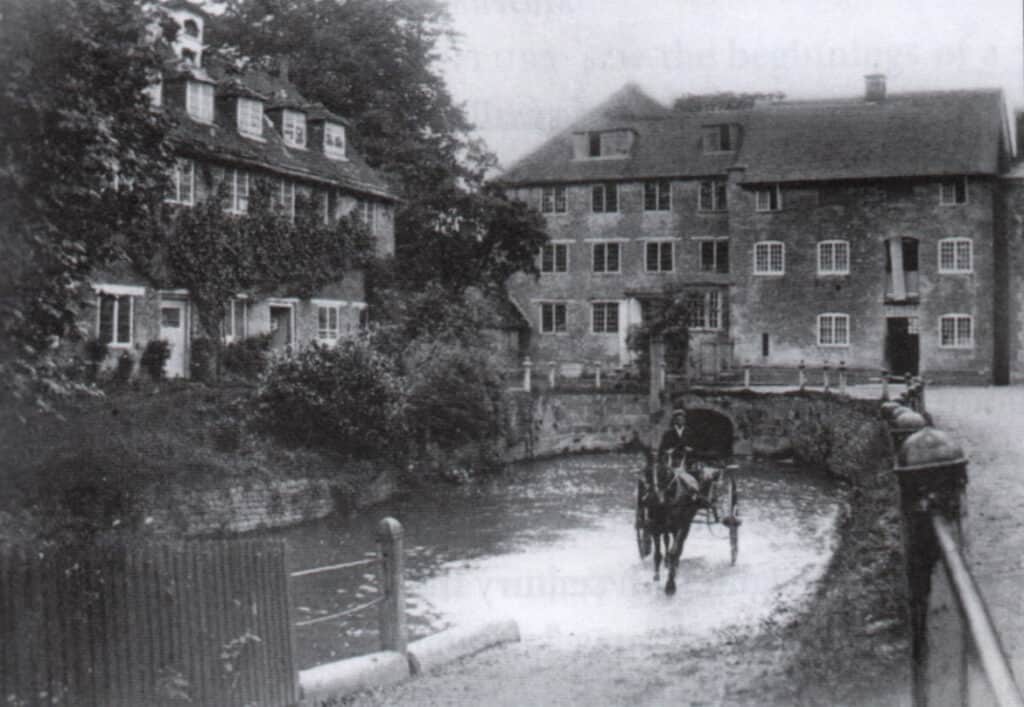They are sadly long gone, but Gillingham’s old mill buildings once provided the town with a gloriously historic centrepiece.
They were attractive enough to catch the eye of the great John Constable, who painted the mill while staying at Gillingham Vicarage with his friend Archdeacon John Fisher.

Town Mills c1900. The recently closed silk mill is left of centre adjoining the rebuilt corn mill (far right). Far left is the house that included the indentured girls’ dormitory with silk workrooms rooms on the ground floor. Picture from Gillingham: The Making of a Dorset Town, by John Porter
The silk mill, built by Stephen Hannam in 1769 adjoining his corn mill, provides one of Gillingham’s most interesting historical stories.
For many decades, beginning in the 1780s, the Hannams added girl power to water power to aid their silk throwing business.
Surviving apprenticeship documents reveal that girls aged nine to 18 were recruited from London workhouses to ‘learn the art and mystery of a silk throwster’.

A similar view from a slightly different angle
Under the terms of the indentures, the girls were required to serve the mill until marriage or the age of 21.
Most probably did marry locally and will be among the ancestors of some North Dorset people today.
For their part the Hannams were required to provide the girls with ‘double apparel of all sorts, good, and new … one suit for holy days and another for working days’.
The girls were accommodated on the upper floors of an east-facing Georgian house a few yards away, with the ground floor used for washing and drying the silk.

Barnaby Mill retirement flats from a similar angle in 2021 with the surviving mill manager’s house (far right)
This house later became Brickell’s printworks until it was demolished in 1924.
The silk mill, which shared a mill wheel with its grist-grinding neighbour, closed in 1895.
G B Matthews and Co continued as millers until 1965, after which the vacant mill buildings fell into disrepair and were eventually destroyed by fire in 1981.
A decade later the Barnaby Mill retirement flats were built on the site next to the old mill manager’s cottage – the only survivor of the original mill complex.
Roger Guttridge



